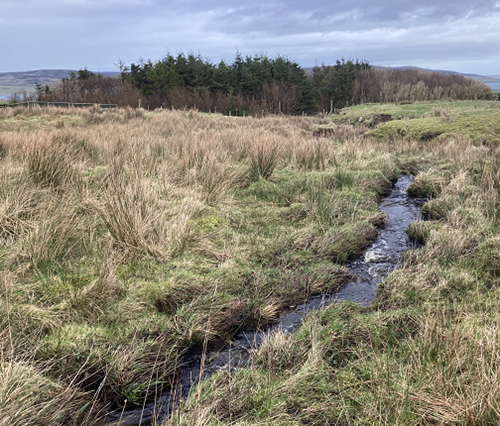Biodiversity Audits

As part of the Whole Farm Plan, RPID are looking for farmers and crofters to produce a biodiversity audit of their farm/croft. The biodiversity audit will be mandatory for all claimants of the Basic Payment Scheme (BPS) by 2028; however, it only needs completed/updated every five years.
For those of you that have had an agri-environment scheme in the past, you may well be familiar with the concept of an environmental assessment. This is a map that is colour-coded with the habitats that exist on the farm/croft.
The biodiversity audit under the Whole Farm Plan looks at over thirty habitats, which fall under the following categories:
- Cropped land (includes arable, managed crops for nature such as wild bird seed and field margins).
- Grassland (improved grassland, semi-improved grassland, unimproved grassland, wet/marshy grassland and rush pasture).
- Wetlands (includes ponds and lochs, water margins and wetlands).
- Woodland (conifer plantation, natural woodland, mixed woodland, native scrub and wood pasture).
- Coastal (saltmarshes, sand dunes, grazed machair, cropped machair, coastal heath).
- Uplands and peatlands (upland mixed habitats, peatland, upland grassland, heath).
- Designated sites (SSSI, SAC, SPA and scheduled monuments).
- Linear habitats (hedges, dykes, rivers, streams).
- Other (i.e. bracken).
- Point habitats (including invasive non-native plant species, wader scrapes).
Details of how each habitat is categorised is now on the Rural Payment’s website, and although the list seems very daunting, there is a detailed habitat description on the site to aid with categorisation.
Currently the audit does not need to cover seasonal land and individual common grazing shares is not covered by the audit in 2025.
But common grazings which are managed and used to claim support by a single business such as a sheep stock club will be required to complete a biodiversity audit.
When completing the audit, you will have to select one habitat that best describes most of the land cover for each field. But where it is practicable it would be better to map all the individual habitats and features that are present even if they are in one field. A common-sense approach should be adopted here, depending on the size of the field and the habitats in question.
The condition of the habitats should also be assessed when completing the biodiversity audit. More detail is yet to be released on how to assess the condition of each habitat, especially since condition can be very subjective.
If you had an Agri-Environment Climate Scheme (AECS) contract from 2022, 2023, 2024 the FEA maps should partially meet the above conditions but may need some updates with additional habitat information as described earlier.
5 Top Tips
- Check if any previous habitat maps for your farm/croft have been done as part of an Agri-Environment Scheme.
- Refer to the habitat definitions on the Rural Payments website.
- Check to see if you have any designated land on Nature Scot website “Sitelink”.
- NatureScot is developing a Farm Biodiversity Scotland app (although this is still under development, it should be available from 2025) this will aid in habitat identification and mapping.
- The Farm Advisory Service (FAS) offer specialist advice for biodiversity and landscape management, why not take advantage of this grant (up to value of £1600) to help with getting your farm/croft mapped and getting advice on restoring and managing biodiversity on your land?
Susan Pirie, Senior Consultant and Area Manager, susan.pirie@sac.co.uk

Unearthed is the exclusive SAC Consulting members' monthly newsletter. Unearthed offers insights and tips from our experts on what we think is in store for farming and crofting in the coming months in order to protect and enhance your business.
Posted by Unearthed News on 16/10/2024
